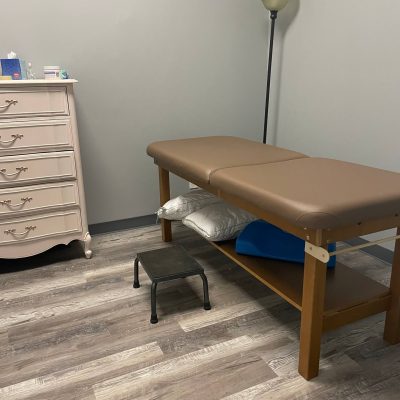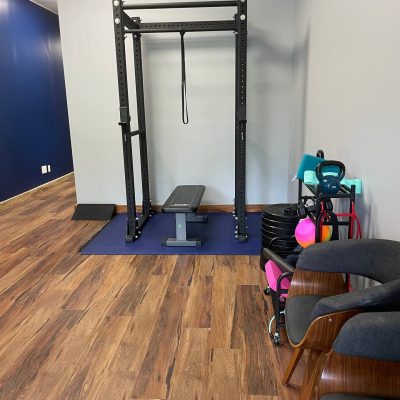As a physical therapist, I can honestly say that there are few words as frequently said in my field as ‘sciatica’. So, then, isn’t it odd how such an every-day ailment can be so shrouded in mystery for most people? In fact, do you really know what it is? Sciatica is actually one of the most common forms of back, leg, and hip pain around, and yet it remains incomprehensible to many. So, as an early holidays present, I wanted to take this opportunity to talk about what sciatica is, what some of the hidden causes of this affliction may be, and how it can be treated. Ready? Let’s jump in!
Sciatica is a very painful condition associated with pain stemming from the sciatic nerve. As one of the most prominent nerves in the lower back, pressure placed on the sciatic nerve is responsible for a myriad of issues related to back, hip, leg, and knee pain. The nerve itself runs from the lower back through the pelvis and down into both legs. It can affect the entire lower body and can cause incredible discomfort and disruption to daily life: a burning, radiating pain can stretch down the leg, into the buttocks, and through into the lower back, thereby causing such discomfort that even walking may be a strain. At times, it can even feel like a stab down the leg! Yet, thankfully, we can aim to avoid this discomfort by understanding it a bit better. Let’s take a look at some of the ways the sciatic nerve can be affected and then, happily, how to avoid them!
A few causes of sciatica:
Spinal Problems
Unfortunately, sciatica may be related to spinal issues such as slipped discs or the like. Sometimes, sciatica can be caused by extra pressure being placed on spinal discs, thereby causing the nerve to become irritated or ‘pinched’. If this is you, all hope isn’t lost, so please keep reading.
A Poor Sleeping Position
If you sleep on your back or stomach, you may be on your way to developing sciatica. Sleeping in these positions places undue pressure on the sciatic nerve, thereby causing irritation and discomfort. It’s far better to sleep on your side with a pillow placed between your knees – this will align your spine and ensure that the sciatic nerve isn’t pulled downward.
Poor Core Strength
Nope, I’m not talking about a six pack! Core strength refers to the ability of the muscles in your torso to provide adequate support to your spine. Without this support, your spine would be exposed to untold danger. In addition, if the core muscles aren’t strong enough, the sciatic nerve strains under the pressure of the spine. Why? There is nothing for it to hold onto! So, start doing some yoga or Pilates – these are good ways to start strengthening your core muscles.
Obesity
As I mentioned, sciatica is caused by pressure being placed on the nerve and thereby irritating it. It stands to reason, then, that obesity exacerbates sciatica. The more weight is carried by the spine, the greater chance of nerve irritation and pressure. So, though losing weight may seem like an uphill battle, it can be done: eat mostly vegetables, be sure to watch your sugar intake, keep hydrated and… stay active.
Prolonged Sitting
Immobility is by far the leading cause of sciatica. If the back isn’t stretched and moved, then the muscles stiffen and pressure is placed on the sciatic nerve. In addition, sitting in one position for prolonged periods of time may lead to overcompensation in the muscles, thereby placing more pressure on one side of the body than the other: this may often lead to sciatic issues down the road. The answer? Get up, stretch, and get outside!
There are, in fact, more causes for sciatica. These include, but are not limited to, osteoporosis, age related spinal defects, smoking, low activity levels, and poor posture. However, for all intents and purposes, it’s important to understand that sciatica can happen to anyone, and the pain that it presents is definitely not a walk in the park.
Happily, there is a way to overcome sciatica. And no, I don’t mean with painkillers or injections – if anything, these types of ‘solutions’ offer nothing more than a temporary reprieve and are potential health hazards. It’s far better to turn to physical therapy, as a physical therapist will not only treat the root cause of the problem, thereby giving you permanent pain relief, but will also equip you with the tools to maintain a pain free life at home. In addition, physical therapy will help you build the foundation for overcoming sciatica: from pointing you in the right direction when it comes to the causes outlined above, to showing you the correct posture you should adopt and how to manage everyday activities without placing pressure on the sciatic nerve. With tailor made stretches and routines, physical therapy is by far the safest and most effective route to take for lasting sciatica treatment.
It’s not easy to understand sciatica, but the good news is you’re not alone. We can help answer any questions you have – one of our hands-on, qualified physical therapists will be happy to allay your fears and get you started on your journey to the pain free life you deserve.
With the holidays around the corner, and many new memories to be made, we hope that this post has helped you understand sciatica a little better. What’s more, we hope we’ve given you some real advice about how to tackle the possibly debilitating pain you’re suffering from on a daily basis. For more information and advice, please call us. Happy holidays!







